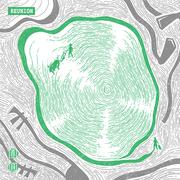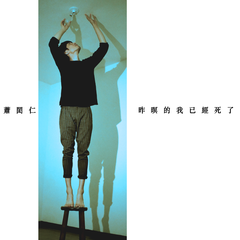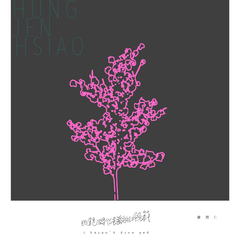
团圆
歌手:西港东竹林保安宫牛犁歌阵、七股竹桥庆善宫牛犁歌阵、萧闳仁
发行时间:2019-09-30
发行公司:StreetVoice/台南市政府文化局
〈在牛犁歌里团圆〉
提到台南的民俗艺术,最具代表性的莫过于艺阵(艺阁与阵头)文化了,台南艺阵数量之多、种类之丰,都是独步全台,更有许多只有台南才看得到的艺阵,使得台南有了「众神之都.艺阵之乡」的美称。
自2012年起,台南市政府便获得文化部支持,推动艺阵传承扎根与推广发展计划,连年耕耘,规划
〈在牛犁歌里团圆〉
提到台南的民俗艺术,最具代表性的莫过于艺阵(艺阁与阵头)文化了,台南艺阵数量之多、种类之丰,都是独步全台,更有许多只有台南才看得到的艺阵,使得台南有了「众神之都.艺阵之乡」的美称。
自2012年起,台南市政府便获得文化部支持,推动艺阵传承扎根与推广发展计划,连年耕耘,规划传习课程、进行学术交流、跨界创意展演、开发文创媒合等等,全面开拓传统艺阵在当代的多元发展路径,成果相当丰硕。
其中阵头又可粗分为文阵与武阵,带兵器的阵种属武阵,无兵器的属文阵,部分文阵具有高度音乐性,如西港刈香重要文阵牛犁歌阵便是。牛犁歌阵演出分为前、后场,兼具「演」、「唱」、「奏」三部分,前场由男童扮演丑、旦舞动,后场由艺师唱歌、奏乐搭配,歌曲包含民间传说、爱情故事、敬天谢神等内容,演出形式生动活泼,体现传统农家真淳情调。
为了使大众能够亲近、认识牛犁歌阵音乐之美,台南市政府又特别邀请知名创作歌手萧闳仁参与,一方面录制传统艺师所唱奏的牛犁歌阵,同时又以旧曲新唱方式进行音乐改编,完成了这一张音乐专辑。
专辑中所收录的歌曲,分别来自台南两大牛犁歌阵无形文化资产保存团体,由阵式到服装造型及歌曲内容,两阵都各有不同特色:一首是西港东竹林保安宫牛犁歌阵出阵开场曲〈牛犁歌〉,是为请神曲;另一首是七股竹桥庆善宫牛犁歌阵出阵收尾曲〈团圆〉,是谢神曲。传统艺师们古朴厚实的嗓音与萧闳仁温暖柔情的声线各具风采,两者的结合,宛若抒情诗,悠悠唱出蕴藏在歌曲里的动人情怀。
就让我们一起来唱一首牛犁歌,歌中的神灵、家乡的人们、传统的文化,都在等待相见,团团圆圆。
〈Reunited in the Songs of Plowing〉
When it comes to folk art in Tainan, the most representative events are folk-art processions (parades of floats and troupes). Tainan possesses a greater number and variety of Tainan’s folk-art processions than those of any other city in Taiwan, and many of them are not accessible anywhere else. It is no wonder Tainan is regarded as the capital of the gods and the city of folk-art processions.
Since 2012, the Ministry of Culture has supported the Tainan city government’s efforts to promote the inheritance and cultivation of its folk-art processions with practical development plans. After years of devotion to planning training programs, conducting academic exchanges, hosting cross-field creative performances, and matching cultural and creative activities, we have explored diverse paths for the development of traditional folk-art processions in the modern era and gained fruitful results.
Troupe parades are generally divided into two main categories: civil troupes and martial troupes. Troupes carrying weapons are martial troupes, and those with no weapons are civil troupes. Some civil troupe processions include highly skilled musical performances, such as Niu-Li, the key civil troupe in the Sikang incense-offering ceremony. A Niu-Li performance is usually divided into halves, each containing three parts: acting, singing, and instrument playing. The first half is led by boys playing as clowns and girls, and the second half consists of musical performances by the artists. Their songs cover topics of folklore, love, and worship of gods. The performing styles are lively and cheerful, reflecting the true feelings of traditional peasant families.
To help the public better understand and appreciate the beauty of these plowman’s songs and dances, the city government of Tainan invited the well-known singer-songwriter Hsiao Hung-jen to record a musical album with songs sung by traditional artists.
Songs on the album are from the two major Niu-Li intangible cultural-asset preservation groups in Tainan. Each group has its own distinctive features, from formation stories to costumes, styling, and songs. The first song on the album is the opening number for Sikang Tungchulin Paoan Temple’s Niu-Li troupe called “The Plowman’s Song.” It is a song of welcoming to the gods. The other is “The Reunion,” the final song from Cigu Chuchiao Chingshan Temple’s Niu-Li troupe, a song that expresses gratitude to the gods. The unsophisticated and penetrating voices of the traditional artists combined with the warm, tender voice of Hsiao Hung-jen combine to perfectly express the touching feelings hidden in the song.
Let us sing the plowing songs together, believing that the gods, people back home, and traditional culture described in the song can finally come together.










